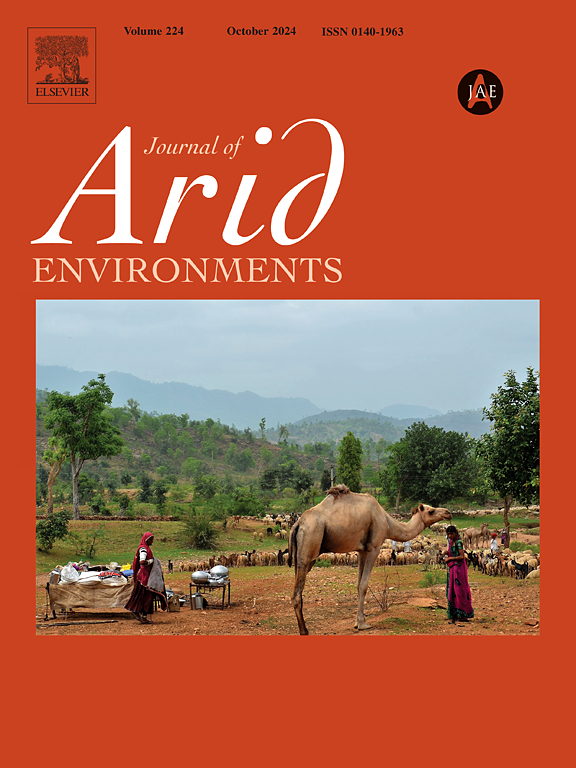卡廷加干旱林树种生物量生产受到降水减少和长期人为干扰的负面影响
IF 2.6
3区 环境科学与生态学
Q2 ECOLOGY
引用次数: 0
摘要
热带干燥森林目前受到刀耕火种农业、畜牧业生产、林产品开发和日益干旱的影响,对初级生产力的影响仍有待调查。在本研究中,我们研究了长期人为干扰和降雨减少对巴西Caatinga干旱林中piyrocarpa moniliformis木质生物量的影响。通过对50个个体的树木年轮分析,我们研究了暴露于不同程度的人为干扰和平均降雨量的地点的树木年龄、径向生长率和累积木质生物量。累积木质生物量为4.31 ~ 219.26 kg /个体(22年和27年)。湿度较大、受干扰程度较轻的地区土壤水分含量最高(90.41±54.75 kg),湿度较小、受干扰程度较轻的地区土壤水分含量最低(36.40±18.39 kg)。生长和生物量与降雨量呈正相关,但受干旱和干扰的负相关。干旱地区的树木至少需要8年的时间才能达到与湿润地区相当的生物量水平。考虑极端降水梯度,干燥地的生物量平均减少59.74%。这些发现强调了干旱和慢性干扰对树木生长和生物量的影响,最终影响干旱森林的生产力。本文章由计算机程序翻译,如有差异,请以英文原文为准。
Biomass production by tree species is negative affected by decreased precipitation and chronic anthropogenic disturbance in a Caatinga dry forest
Tropical dry forests are currently exposed to slash-and-burn agriculture, livestock production, exploitation of forest products and increasing aridity, with impacts on primary productivity still to be investigated. In this study, we investigated how chronic anthropogenic disturbance and reduced rainfall affect the woody biomass of Pityrocarpa moniliformis in a Caatinga dry forest, Brazil. Using tree-ring analysis for a total of 50 individuals, we addressed tree age, radial growth rates, and accumulated woody biomass across sites exposed to varying levels of human disturbance and average rainfall. Accumulated woody biomass ranged from 4.31 to 219.26 kg per individual (22 and 27 years, respectively). The highest values were found in wetter, less disturbed sites (90.41 ± 54.75 kg), while the lowest were observed in drier but also less disturbed sites (36.40 ± 18.39 kg). Growth and biomass were positively correlated with rainfall but negatively affected by drought and disturbance. Trees in drier areas required at least eight additional years to reach biomass levels comparable to those in wetter areas. Considering the extremes of the precipitation gradient, drier sites exhibited, on average, 59.74% less biomass. These findings highlight the impacts of aridity and chronic disturbance on tree growth and biomass, ultimately influencing dry forest productivity.
求助全文
通过发布文献求助,成功后即可免费获取论文全文。
去求助
来源期刊

Journal of Arid Environments
环境科学-环境科学
CiteScore
5.70
自引率
3.70%
发文量
144
审稿时长
55 days
期刊介绍:
The Journal of Arid Environments is an international journal publishing original scientific and technical research articles on physical, biological and cultural aspects of arid, semi-arid, and desert environments. As a forum of multi-disciplinary and interdisciplinary dialogue it addresses research on all aspects of arid environments and their past, present and future use.
 求助内容:
求助内容: 应助结果提醒方式:
应助结果提醒方式:


